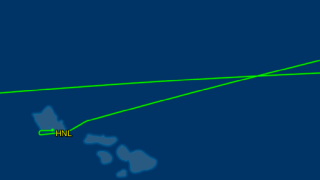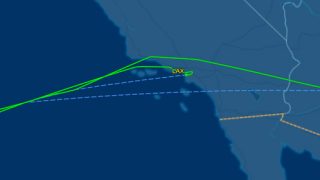Keeping your cool at 30,000 feet helps everyone on long flights between Hawaii and the mainland. Failure to do so can lead to trouble as 29 year old Cayla Farris found out from Waipahu, Oahu. The U.S. Attorney’s Office, District of Arizona, just announced she has been sentenced to “a time-served sentence of 3.6 months in prison, followed by three years of supervised release.”
Faris pleaded guilty to Interference with a Flight Crew Member. During her term of supervised release, she will not be permitted to travel by commercial aircraft without prior approval. Farris was ordered to pay $38,952.00 in restitution to American Airlines for delay-related costs due to her actions.
What happened is that on February 13, 2022, Farris was onboard American’s flight bound from Phoenix to Honolulu. “During the flight, Farris used profanity and threatened the flight crew and passengers onboard. As a result of her behavior, the flight crew was unable to continue their duties. The Captain ultimately decided to turn the plane back to Phoenix.”
American Airlines had previously reported that the flight from Phoenix to Honolulu had to be rerouted due to a disruptive passenger. At the time of the incident, American had not indicated further the nature of the disruption. The Court reported that, “this disturbance caused several flights to be re-routed to Hawaii.”
American 694 was the impacted route. It was en route to Honolulu before the unscheduled return to Phoenix Sky Harbor International Airport. It had departed Phoenix at about 3:30 p.m. and returned safely more than three hours later at 6:53 p.m. The aircraft was met by law enforcement personnel met when it arrived at the gate.
Another diversion on same route occurred earlier this year.
In January, an American Airlines Boeing 789 Dreamliner diverted on the same route to Honolulu from Phoenix.
That plane departed Phoenix Sky Harbor and was in the air for over three hours before diverting to a landing at LAX. The incident was also caused by a passenger behavior issue onboard. American Airlines confirmed only that the diversion was “Involving an unruly customer.”
Pacific Ocean flights are always problematic in terms of diversion choices since there are so few. Once a plane reaches half-way from the west coast to Hawaii, it in almost all instances continues to the closest diversion point.
Just two weeks ago we wrote that: Five Hawaii Flight Diversions In Recent Days Rattle Nerves.
Hawaii has witnessed a spike in flight diversions, raising eyebrows. Notably, two more diversions occurred since our previous report, which brought the total to five diversions in less than a week.
Among the recent incidents, Alaska Airlines experienced a diversion, followed by another diversion by United Airlines less than 72 hours later. This surge brings the total number of Hawaii flight diversions to nearly 20 in the past few months.
Another recent diversion involved United Flight 1724, a Boeing 757-300 traveling from Kona to San Francisco. It diverted to Honolulu due to a mechanical issue, specifically a redundant hydraulic problem. The extended delay in processing passengers and addressing the issue highlights challenges in handling unexpected incidents.
Another notable incident involved Alaska Airlines Flight 850, a Boeing 737 MAX 9, which departed from Los Angeles to Honolulu. The flight made a U-turn over the Eastern Pacific for reasons unknown, returning to Los Angeles before continuing its journey.
And United Flight 1509, operating on a Boeing 777-200, diverted en route to Hawaii, marking another recent incident.
In spite of concerns, flight diversions are a common occurrence and can result from various factors, including medical emergencies, adverse weather, disruptive behavior, and mechanical issues. Hawaii-bound flights, in particular, adhere to stringent ETOPS regulations due to the expansive ocean crossing.
As these recent diversions and passenger-caused ones continue to capture attention, we welcome input and information from our audience to better understand the underlying causes.
Note: Comments are current under repair and should be back later today. Thanks for your understanding.






